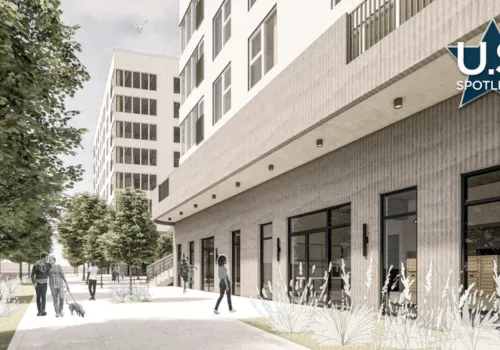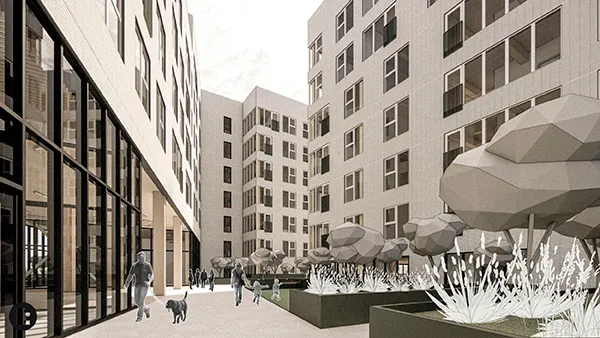
Michigan’s largest timbered residential complex, SouthTown, will also be the first in the world to feature a unique power system that converts natural gas into electricity while using carbon storage.
Designed by Ann Arbor-based Synecdoche, known for exploring alternative construction techniques, the eight-story, 220,000-square-foot building will offer 18,000 square feet of office space and 25,000 square feet for community areas. Construction will begin in 2025, with completion expected in 2027, in a largely open area south of the University of Michigan’s athletic campus.
While SouthTown will offer both market-rate and affordable apartments, the standout feature is the ground floor, where a microgrid utility will generate the building’s electricity without relying on the local utility grid.
Co-founder and design director Adam Smith explained, “The big thing that’s taking up space on the ground floor is a separate microgrid utility that’s going to generate all of the electricity onsite, so we’re not connected to the utility.”
The system will generate more than one megawatt of electricity using natural gas fuel cells that convert gas into power without burning it, eliminating exhaust and combustion emissions. Two large batteries will store the electricity, alongside geothermal energy sources and a carbon capture system that stores CO2 for potential resale to clients like beverage companies.
The rooftop will feature solar panels, generating around 140 kWh, though the roof space will primarily be used for terraces and decks for residents to enjoy outdoor spaces.
“This is the first residential project we know of to do something like this. There are industrial applications for it, but we’re not aware of any residential use of it for the entire power supply,” Smith said.

The building itself will be constructed from cross-laminated timber (CLT), a sustainable material that stores carbon. The project cost is $140 million, with $30 million allocated for the electrical systems.
Smith noted, “The premium for mass timber construction can vary about 5 to 15 percent more than traditional methods, but it can be offset by the reduction in onsite construction time.”
The exterior will feature concrete panels, but the interior will showcase exposed timber columns and beams for aesthetic and environmental benefits. The timber used for the project will be sourced from Element Five’s St. Thomas, Ont. plant.
Smith added, “It makes the spaces look nicer,” emphasizing the benefits of CLT beyond sustainability.